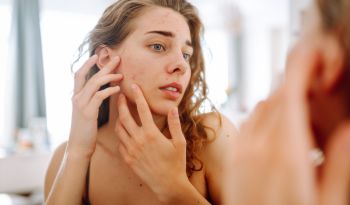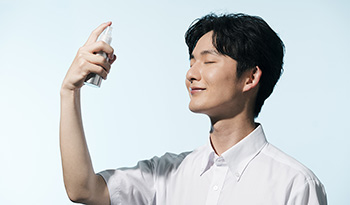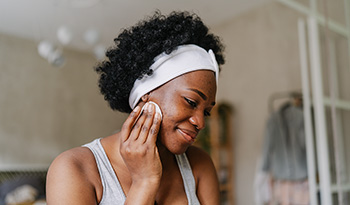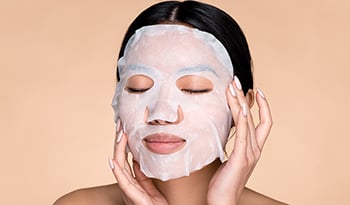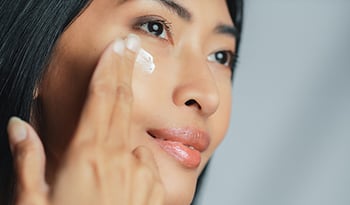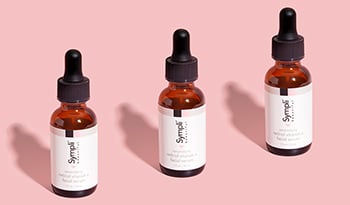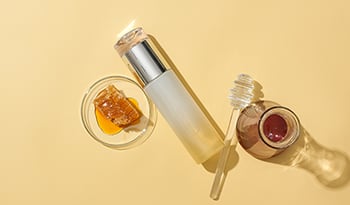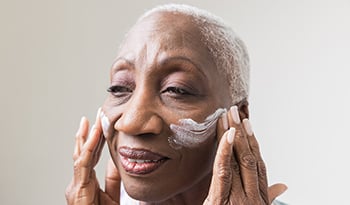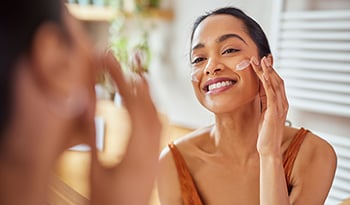Sağlıklı Genç Ciltler İçin 5 Temel Besin: Berrak ve Parlak Cilt İçin İpuçları
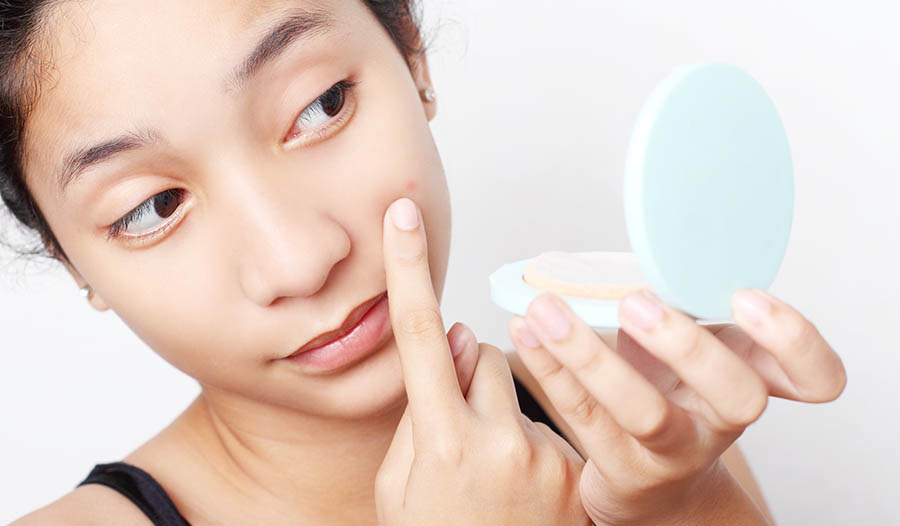
Başlangıçta Nisan 2017/ Güncellendi Temmuz 2023
Hormonların saldırısı ve büyüyen bir vücudun stresi çeşitli nedenlerle iyi beslenmeyi bir zorunluluk haline getirse de, beslenme çoğu genç için bir öncelik değildir.
Örneğin sivilce alın. Sivilce üzerindeki doğrudan diyet etkileri hakkındaki teoriler tartışmalı olsa da, doğru beslenmenin sağlıklı cildi destekleyebileceği inkar edilemez. Genel olarak sağlıklı bir diyete ek olarak, sivilceli genç için birkaç özel diyet önerisi vardır:
- Tüm rafine veya konsantre basit şekerleri ortadan kaldırın veya sınırlayın.
- Kızarmış yiyeceklerin alımını ortadan kaldırın veya sınırlayın.
- Hayvansal ürünlerden (et ve süt ürünleri) doymuş yağ alımını azaltın.
- Süt ve süt alımını ortadan kaldırın veya sınırlayın.
Tabii ki, bir gençten bu değişiklikleri yapmasını istemek genellikle zordur. Tüm faydaları görmek biraz zaman alacaktır, bu nedenle üç aylık bir taahhütte bulunmak iyi bir denemedir.
Doğru Yağ Türlerinin Önemi
Uygun yağ türü yemek, sağlıklı ve parlak bir cilt için çok önemlidir.
Kızarmış yiyeceklerden ve hayvansal kaynaklardan çok fazla diyet yağından kaçınmanın yanı sıra, tekli doymamış yağları, esansiyel yağ asitleri ve uzun zincirli omega-3 yağ asitlerini gencin diyetine dahil etmek çok önemlidir.
Tekli doymamış yağların en iyi kaynakları zeytinyağı, avokado ve çoğu fındık ve tohumdur. Omega-6 ve omega-3 esansiyel yağ asitlerinin en iyi kaynakları keten tohumu yağı, chia tohumu, kabak çekirdeğive ceviz'dir.
Sık balık tüketimini dahil ederek veya EPA ve DHA sağlamak için balık yağı veya algbazlı takviyeler kullanarak daha uzun zincirli omega-3 EPA ve DHA tüketimini artırmak da önemlidir.
Balık yağı takviyeleri sivilce de dahil olmak üzere birçok cilt hastalığına önemli ölçüde fayda sağlamıştır. 38 insan klinik çalışmasının analizi, “Bu derleme, dermatolojide omega-3 yağ asidi kullanımlarının birçok iyi çalışılmış faydasını sağladı.”
Sivilce, egzama ve sedef hastalığı gibi yaygın cilt sorunları ile uğraşan kişilerde olumlu sonuçlar gösterilmiştir. Yüksek kaliteli balık yağı veya yosun bazlı EPA+DHA takviyesi için günlük dozaj önerisi, yeterli alımı sağladığından 800 ila 1.000 mg EPA+DHA'dır.
Cilt Sağlığını Destekleyen 5 Diyet Takviyesi
Esansiyel yağ asitleri ve EPA+DHA takviyelerinin ötesinde yardımcı olabilecek başka besinler de vardır. Kaliteli bir multivitamin/multimineral formülü almak güçlü bir temel sağlayabilir. Ancak maksimum fayda için birkaç besin maddesinin ayrı ayrı alınması gerekebilir.
1. Çinko Cilt Faydaları
Çinko normal cilt fonksiyonu ve testosteronun uygun kullanımı için kritik öneme sahiptir. Akne, ciltte testosteron ve diğer seks hormonlarının lokalize artmış aktivitesi ile ilişkilidir, bu da sebum üretiminin artmasına ve akne lezyonlarına yol açar. Aknenin ergenlik döneminde sıklıkla ortaya çıkmasının nedenlerinden biri artıştır.
İlginç bir şekilde, çinko seviyeleri ergen erkeklerde diğer yaş gruplarına göre en düşüktür. Akneli deneklerde biyoyararlanabilen çinko formlarını kullanan insan klinik çalışmaları etkileyici etkiler göstermiştir.
Sonuçlar oral antibiyotik tedavisi ile görülenlere benzerdi. Aknedeki çinko takviyesine ilişkin insan klinik çalışmalarından elde edilen mevcut tüm kanıtların yakın tarihli bir sistematik incelemesi, “Çinko akne tedavisinde, özellikle monoterapi veya yardımcı tedavi olarak kullanıldığında inflamatuar papüllerin sayısını azaltmada etkilidir.”
Bazı insanlar anında iyileşme gösterse de, klinik çalışmalarda çinko takviyesine yanıt veren çoğu deneğin sonuçları görmeden yaklaşık 12 hafta önce ihtiyacı vardı. Bu nedenle, sonuçları görmeden önce biraz zaman alacaktır. Bu çalışmalarda kullanılan tipik dozaj günlük 30-45 mg idi. Daha iyi emilim için pikolinat, sitrat, asetat veya monometionine bağlı çinko önerilir, bu da daha iyi sonuçlar anlamına gelir.
Çinko takviyesinin rosacea, seboreik dermatit ve sedef hastalığı dahil olmak üzere diğer cilt hastalıklarında yardımcı olduğu gösterilmiştir.
2. Krom Cilt Faydaları
Akne, ciltte zayıf insülin duyarlılığı ile bağlantılıdır. Akne hastalarının cilt biyopsilerinde glikoz (kan şekeri) seviyelerinin ölçülmesi, bazı araştırmacıların sivilceyi “cilt diyabeti” olarak adlandırmasına neden olan glikoz kullanımının bozulduğunu gösterdi.
Neyse ki, krom takviyesinin glikoz toleransını iyileştirdiği ve cilt hücrelerinin insüline duyarlılığını arttırdığı gösterilmiştir. Ve bu sivilce hastalarında hızlı iyileşmelere yol açabilir. Günde 200-400 mcg alın. Daha iyi emilim için yüksek kromlu maya veya pikolinata bağlı krom önerilir.
3. B6 Vitamini Cilt Faydaları
Karaciğerdeki hormonları parçalamak için B6 vitamini gereklidir. Gençlerde düşük B6 vitamini seviyeleri sivilceye, ruh hali değişimlerine ve şeker isteklerine katkıda bulunabilir. B6 Vitamini, adet öncesi dönemde akne alevlenmelerini tedavi etmek için başarıyla kullanılmıştır. Tipik dozajlar günlük 25-100 mg'dır.
4. Selenyum ve E Vitamini Cilt Faydaları
Selenyum ve E Vitamini , akne iltihabını önlemeye yardımcı olan bir enzim olan glutatyon peroksidaz fonksiyonunda rol oynar. Tipik olarak, akne hastalarında ciltte önemli bir antioksidan enzim olan glutatyon peroksidaz seviyelerinde azalma vardır.
Çalışmalar, E vitamini ve selenyum takviyesinin glutatyon peroksidaz seviyelerini artırdığını ve akneyi önemli ölçüde iyileştirdiğini göstermektedir. Tipik dozajlar E vitamini için 100-200 IU ve selenyum için 100-400 mcg'dir.
5. Probiyotik Cilt Faydaları
Bağırsak mikrobiyomunun rolü, probiyotik takviyesiile birlikte, akne ve cilt sağlığını iyileştirmede uzun bir klinik kanıt geçmişine sahiptir. Akneli gençlerde probiyotik takviyesi denemesi olmamasına rağmen, yetişkinlerde yapılan birkaç çalışma önemli fayda göstermiştir.
Örneğin, akneli 20 yetişkin üzerinde yapılan çift kör, kontrollü bir çalışmada, probiyotik (Lactobacillus rhamnosus) alan grupta aknede plaseboya kıyasla %32'lik bir azalma bulundu. Yine, sonuçlar yaklaşık 12 haftalık takviye sürdü.
Akne İçin Topikal Çay Ağacı Yağı
Çay ağacı yağı , akne ile bağlantılı bakteriler de dahil olmak üzere antimikrobiyal etki gösteren bileşiklere sahiptir, Propionibacterium acnes.11 Akne hastalarında yapılan bir çalışmada, yüz yıkama olarak kullanılan% 5'lik bir çay ağacı yağı çözeltisinin% 5 benzoil peroksit çözeltisine benzer faydalı etkiler gösterdiği gösterilmiştir, ancak çay ağacı yağı çok daha iyi tolere edildi.
Çay ağacı yağı içeren reçetesiz satılan birçok yüz yıkama mevcuttur.
Akne için DIY Çay Ağacı Çözümü
İşte gece tedavisi olarak veya lekelere lekelere uygulanan bir DIY çay ağacı yağı kremi.
Malzemeler:
- 10 damla çay ağacı esansiyel yağı
- 2 yemek kaşığı. saf aloe vera jeli
- 1/2 çay kaşığı. rafine edilmemiş hindistancevizi yağı
Talimatlar
- Çay ağacı yağı ve aloe vera jelini karıştırın.
- İyice karıştırıldığında hindistancevizi yağını ekleyin
- Karıştırıldıktan sonra kapaklı küçük bir kapta saklayın.
Kremi yatmadan önce uygulayın ve sabahları ılık suyla durulayın veya küçük lekeler üzerinde leke tedavisi olarak kullanın.
Bu Yazıdan Çıkarabileceklerimiz
Sağlıklı, güzel görünümlü cilt, gençlik yıllarında iyi bir diyet ve diyet takviyelerinin çok önemli olmasının birçok nedeninden sadece biri olsa da, gençlere, özellikle sivilceden muzdarip olanlara en çok hitap eden faydalardır. Ebeveynlere bu bilgileri kullanmalarını ve çocuklarını doğru beslenmeye ve uygun takviyeleri almaya teşvik etmelerini öneririm.
Referanslar:
- Baldwin H, Tan J. Diyetin Akne Üzerindeki Etkileri ve Tedaviye Yanıtı. Am J Clin Dermatol. 2021 Ocak; 22 (1): 55-65.
- Guertler A, Neu K, Fiedler T, vd. Omega-3 yağ asitlerinin akne vulgaris üzerindeki klinik etkileri. J Dtsch Dermatol Ges. 2022 Temmuz; 20 (7) :1023-1027.
- Thomsen BJ, Chow EY, Sapijaszko MJ. Omega-3 Yağ Asitlerinin Dermatolojide Potansiyel Kullanımları: Bir İnceleme. J Cutan Med Surg. 2020 Eylül/Ekim; 24 (5): 481-494.
- Evet BE, Richards P, Sui JY, Marsch AF. Akne vulgaris'te serum çinko seviyeleri ve çinko tedavisinin etkinliği: Sistematik bir inceleme ve meta-analiz. Dermatol Ther. 2020 Kasım; 33 (6): e14252.
- Zou P, Du Y, Yang C, Cao Y. İz element çinko ve cilt hastalıkları. Front Med (Lozan). 2023 Ocak 17; 9:1093868.
- Sadowska-Przytocka A, Gruszczyńska M, Ostałowska A, Antosik P, Czarnecka-Operacz M, Adamski Z, Łącka K. Akne seyrinde insülin direnci - literatür taraması. Postepy Dermatol Alergol. 2022 Nisan; 39 (2) :231-238.
- McCarthy M. Sivilce için yüksek kromlu maya? Med Hypoth 1984; 14:307—310.
- Snider B, Dieteman D. Premenstrüel akne parlaması için piridoksin tedavisi. Arch Dermatol 1974; 110:130—131.
- Michaelsson G, Edqvist L. Akne vulgaris'te eritrosit glutatyon peroksidaz aktivitesi ve selenyum ve E vitamini tedavisinin etkisi. Acta Derm Venerol (StockH) 1984; 64:9—14
- Siddiqui R, Makhlouf Z, Khan NA. Akne vulgaris'te bağırsak mikrobiyomunun artan önemi. Folia Microbiol (Praha). 2022 Aralık; 67 (6) :825-835.
- Carson CF, Riley TV. Çay ağacı yağının antimikrobiyal aktivitesi. Med J Avustralya 1994; 160:236
- Bassett IB, Pannowitz DL, Barnetson RSC. Akne tedavisinde çay ağacı yağı ile benzoil peroksit karşılaştırmalı bir çalışması. Med J Avustralya 1990; 153:455—458
FERAGAT:SAĞLIK MERKEZİ tanı koymayı hedeflememektedir...













































































 İçindekiler
İçindekiler



